Change in Material Per Turn

This chart is based on a single playout, and gives a feel for the change in material over the course of a game.
Symplified go.
A group is a maximal set of orthogonally adjacent pieces of a single colour. Groups can never merge.
Each turn, in order:
If you cannot complete your turn (usually because a group is surrounded), you lose.
This game is the result of a thought experiment, trying to streamline go. It occured to me that if a group had to grow each turn (as they do in Symple and Sygo by Christian Freeling), then liberties no longer needed to be defined; they became an emergent property. Similarly, ending the game when the first capture would occur prevents ko or other loops.
General comments:
Play: Combinatorial
Mechanism(s): Capture
Components: Board
| BGG Entry | Itsy |
|---|---|
| BGG Rating | null |
| #Voters | null |
| SD | null |
| BGG Weight | null |
| #Voters | null |
| Year | null |
| AI | Wins vs prev level | Draws | Losses | #Games | Win% |
|---|---|---|---|---|---|
| Random | |||||
| Grand Unified UCT(U1-T,rSel=s, secs=0.01) | 36 | 0 | 0 | 36 | 100.00 |
| Grand Unified UCT(U1-T,rSel=s, secs=0.20) | 36 | 0 | 10 | 46 | 78.26 |
| Grand Unified UCT(U1-T,rSel=s, secs=1.48) | 36 | 0 | 11 | 47 | 76.60 |
| Grand Unified UCT(U1-T,rSel=s, secs=4.03) | 36 | 0 | 10 | 46 | 78.26 |
Level of Play: strong beats weak 60% of the time (lower bound with 90% confidence).
| Size (bytes) | 26041 |
|---|---|
| Reference Size | 10328 |
| Ratio | 2.52 |
Ai Ai calculates the size of the implementation, and compares it to the Ai Ai implementation of the simplest possible game (which just fills the board). Note that this estimate may include some graphics and heuristics code as well as the game logic. See the wikipedia entry for more details.
| Playouts per second | 29626.03 (33.75µs/playout) |
|---|---|
| Reference Size | 648760.87 (1.54µs/playout) |
| Ratio (low is good) | 21.90 |
Tavener complexity: the heat generated by playing every possible instance of a game with a perfectly efficient programme. Since this is not possible to calculate, Ai Ai calculates the number of random playouts per second and compares it to the fastest non-trivial Ai Ai game (Connect 4). This ratio gives a practical indication of how complex the game is. Combine this with the computational state space, and you can get an idea of how strong the default (MCTS-based) AI will be.
| 1: White win % | 46.70±3.07 | Includes draws = 50% |
|---|---|---|
| 2: Black win % | 53.30±3.10 | Includes draws = 50% |
| Draw % | 0.00 | Percentage of games where all players draw. |
| Decisive % | 100.00 | Percentage of games with a single winner. |
| Samples | 1000 | Quantity of logged games played |
Note: that win/loss statistics may vary depending on thinking time (horizon effect, etc.), bad heuristics, bugs, and other factors, so should be taken with a pinch of salt. (Given perfect play, any game of pure skill will always end in the same result.)
Note: Ai Ai differentiates between states where all players draw or win or lose; this is mostly to support cooperative games.
Rotation (Half turn) lost each game as expected.
Reflection (X axis) lost each game as expected.
Reflection (Y axis) lost each game as expected.
Copy last move lost each game as expected.
Mirroring strategies attempt to copy the previous move. On first move, they will attempt to play in the centre. If neither of these are possible, they will pick a random move. Each entry represents a different form of copying; direct copy, reflection in either the X or Y axis, half-turn rotation.
| Game length | 37.38 | |
|---|---|---|
| Branching factor | 22.82 | |
| Complexity | 10^38.40 | Based on game length and branching factor |
| Samples | 1000 | Quantity of logged games played |
| Distinct actions | 82 | Number of distinct moves (e.g. "e4") regardless of position in game tree |
|---|---|---|
| Good moves | 43 | A good move is selected by the AI more than the average |
| Bad moves | 38 | A bad move is selected by the AI less than the average |
| Samples | 1000 | Quantity of logged games played |

This chart is based on a single playout, and gives a feel for the change in material over the course of a game.

This chart shows the best move value with respect to the active player; the orange line represents the value of doing nothing (null move).
The lead changed on 28% of the game turns. Ai Ai found 4 critical turns (turns with only one good option).
Overall, this playout was 57.14% hot.

This chart shows the relative temperature of all moves each turn. Colour range: black (worst), red, orange(even), yellow, white(best).

Table: branching factor per turn.

This chart is based on a single playout, and gives a feel for the types of moves available over the course of a game.
Red: removal, Black: move, Blue: Add, Grey: pass, Purple: swap sides, Brown: other.
| 0 | 1 | 2 | 3 | 4 | 5 |
|---|---|---|---|---|---|
| 1 | 81 | 6561 | 17937 | 845673 | 2269437 |
Note: most games do not take board rotation and reflection into consideration.
Multi-part turns could be treated as the same or different depth depending on the implementation.
Counts to depth N include all moves reachable at lower depths.
Inaccuracies may also exist due to hash collisions, but Ai Ai uses 64-bit hashes so these will be a very small fraction of a percentage point.
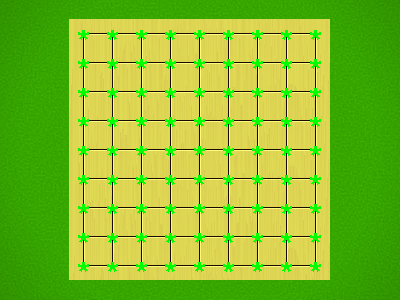
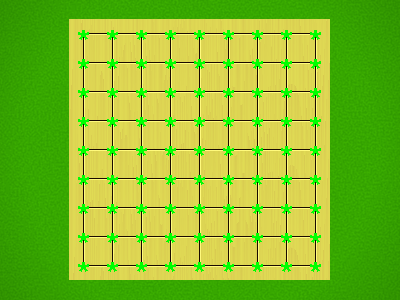
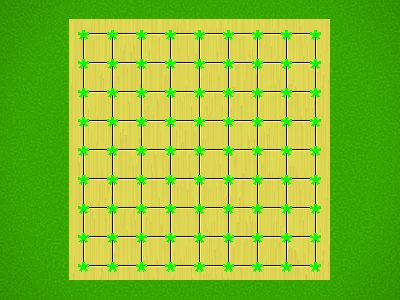
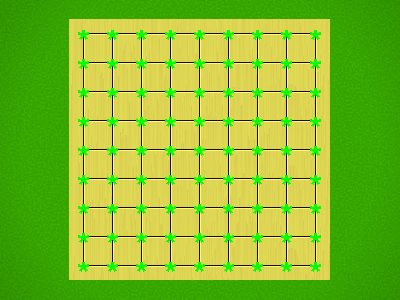

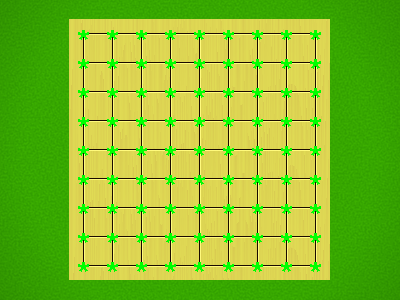
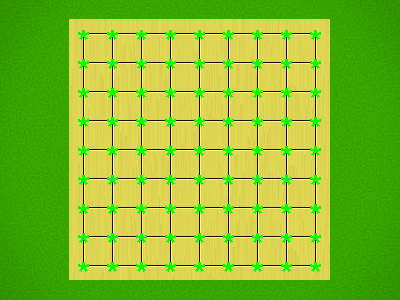

8 solutions found at depth 5.
| Moves | Animation |
|---|---|
| h2,h3,g2,h4,g3,a8,f2,g4 |  |
| b8,h2,b7,c6,i2,c8,a7,c5 |  |
| h2,h3,g2,h4,g3,a8,f2 |  |
| b8,h2,b7,c6,i2,c8,a7 | 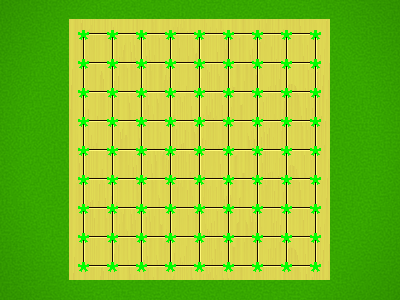 |
| h2,h3,g2,h4,g3,a8 | 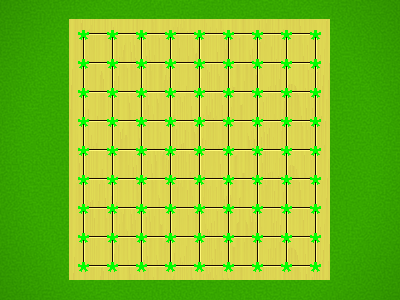 |
| b8,h2,b7,c6,i2,c8 | 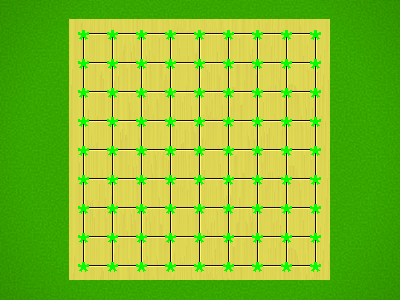 |
| h2,h3,g2,h4,g3 | 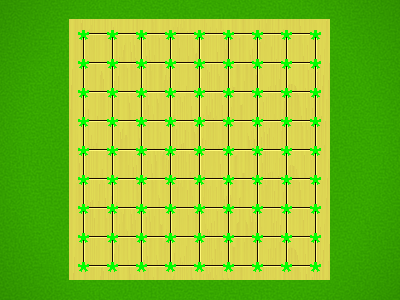 |
| a2,b2,a3,e1,c2 | 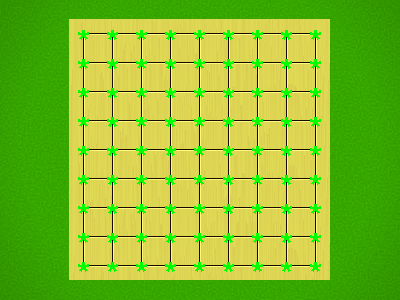 |
| b8,h2,b7,c6,i2 |  |
| b8,b7,c8,b6,c7 | 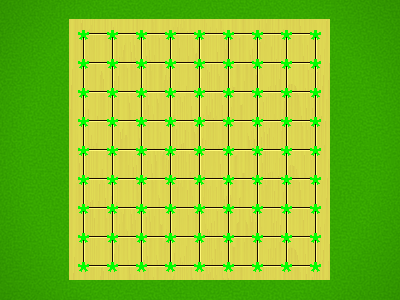 |
| h2,h3,g2,h4 | 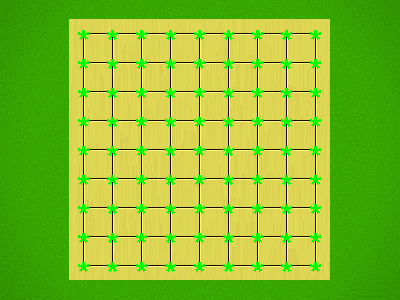 |
| a2,b2,a3,e1 | 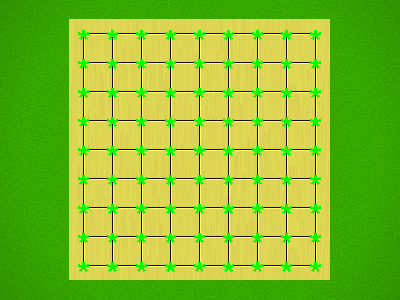 |